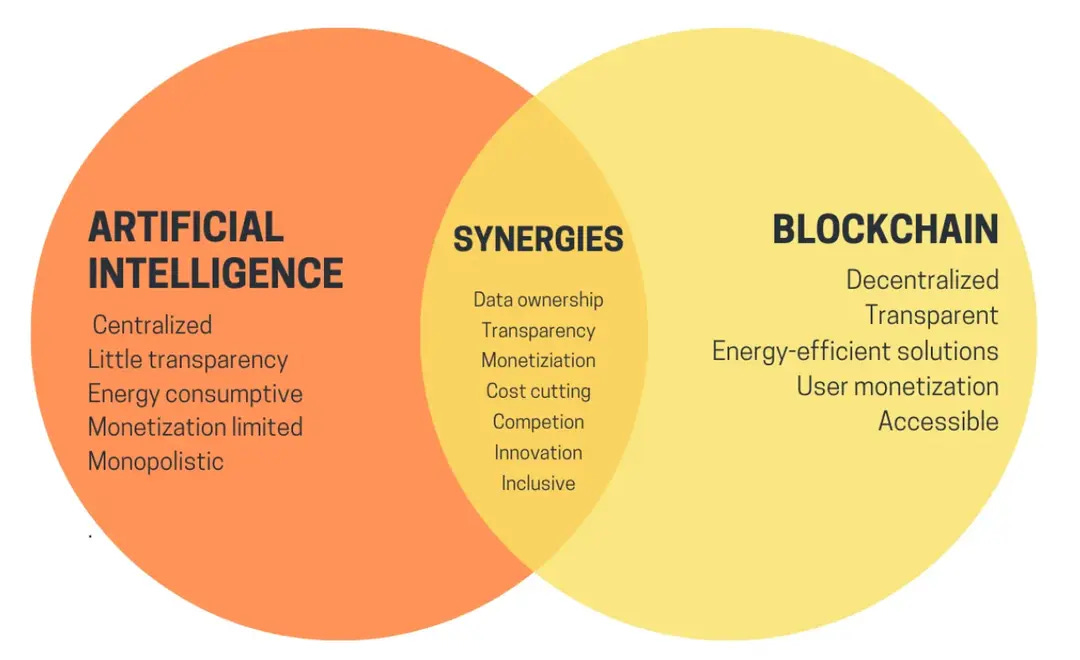The Crypto-AI Stack: Empowering Next-Gen Developers
Explore the convergence of cryptocurrency & AI and discover how decentralized computing, zero-knowledge machine learning, and AI-enhanced dApps are shaping the future of innovation and economics.
Permissionless innovation through peer-to-peer technologies has become a cornerstone of disruption in modern finance. A new catalyst is the surge of consumer-facing, large-language-model (LLM) AI applications. Artificial Intelligence and cryptocurrency, two transformative forces, are converging to create unprecedented opportunities.
AI-Driven Crypto Projects
AI development often demands massive computational power, particularly during the training of models or running inferences. GPUs, the backbone of this computation, have become highly sought-after, with demand outpacing supply. AI crypto projects address this bottleneck by utilizing decentralized computing systems. These systems form blockchain-based marketplaces where hardware providers and AI developers connect. This not only optimizes resource allocation but also democratizes access to high-performance computing.
Source - https://outlierventures.io/wp-content/uploads/2024/02/AI_thesis_v9-1.pdf
A significant innovation within these projects is zero-knowledge machine learning (zkML). By integrating zk-proofs with AI models, zkML enables off-chain computations verified on-chain, enhancing blockchain scalability without compromising efficiency or security. Additionally, AI bots leverage crypto wallets to interact seamlessly with decentralized systems.
The Symbiosis of Crypto and AI
The integration of cryptocurrency and AI forms a mutually beneficial relationship. While blockchain offers decentralization and immutability, AI introduces advanced analytics and decision-making capabilities.
Source - https://vitalik.eth.limo/general/2024/01/30/cryptoai.html
Together, they create a foundation for innovation across industries.
Data as a Treasure Trove
Blockchain generates vast datasets from transaction histories to network activities. AI can analyze this data to:Predict market trends: AI-based crypto trading strategies are 25% more effective than traditional models
Optimize blockchain mechanisms: AI-driven optimization has enhanced Ethereum's gas fee efficiency by nearly 12%
Improve cybersecurity: AI models detect anomalies in real-time, reducing crypto-related fraud by up to 40%
Decentralization vs. Centralized AI Control
Concerns about censorship and bias in AI are rising as large corporations dominate its development. Decentralized AI crypto projects present an alternative, promoting transparency and censorship resistance.Enhanced Security Measures
AI’s ability to detect vulnerabilities in blockchain networks enhances security. For instance, in 2023, AI identified 86.6% of common smart contract vulnerabilities, as highlighted by a Halborn report.
Imagining a Crypto x AI Future
The convergence of AI and crypto is ushering in a transformative era, termed the Agentic Web. This paradigm envisions AI agents operating on crypto infrastructure, becoming major drivers of economic activity.
Here are some key predictions:
AI Agents in Commerce: AI agents equipped with crypto wallets will autonomously transact, fulfilling tasks such as paying for data, APIs, or compute resources.
Generative AI Interfaces: By 2030, conversational AI interfaces could handle 70% of on-chain interactions, simplifying user experiences.
AI-Created Code: The adoption of AI for smart contract generation is expected to spur a "Cambrian explosion" of blockchain applications.
This ecosystem would blend crypto’s decentralization with AI’s intelligence, making digital interactions faster, smarter, and more reliable.
The Crypto x AI Stack: A Layered Perspective
The Crypto-AI stack can be segmented into four layers, each addressing specific needs:
Compute: AI requires substantial computational resources, often in the form of GPUs. Projects like Akash and Gensyn provide decentralized compute marketplaces, reducing dependency on centralized providers.
Data: Training AI models requires vast datasets, but human-generated data is finite. Decentralized data marketplaces, such as Ocean Protocol, facilitate the sharing and trading of proprietary datasets, ensuring scalability for AI training.
Middleware: Platforms like SingularityNET enable developers to build and deploy AI models on decentralized networks, bridging the gap between infrastructure and end-user applications.
Applications: AI-powered apps, whether B2B or B2C, leverage blockchain's decentralized properties to deliver innovative user experiences. Examples include decentralized finance (DeFi) platforms enhanced by AI-driven risk assessment.
Conclusion
The convergence of cryptocurrency and AI is more than a trend—it's a technological evolution poised to transform industries. From enabling decentralized computing to fostering new economic paradigms, the Crypto x AI landscape is rich with opportunities.
For developers and innovators, this convergence offers a fertile ground to build solutions that are scalable, secure, and intelligent. As these technologies continue to mature, their combined impact will reshape not just the blockchain ecosystem but the broader digital economy.
And to ease the process of these developments and allow the devs to contribute to the more potential benefits, Devdock provides a fully-fletched web3 copilot.




